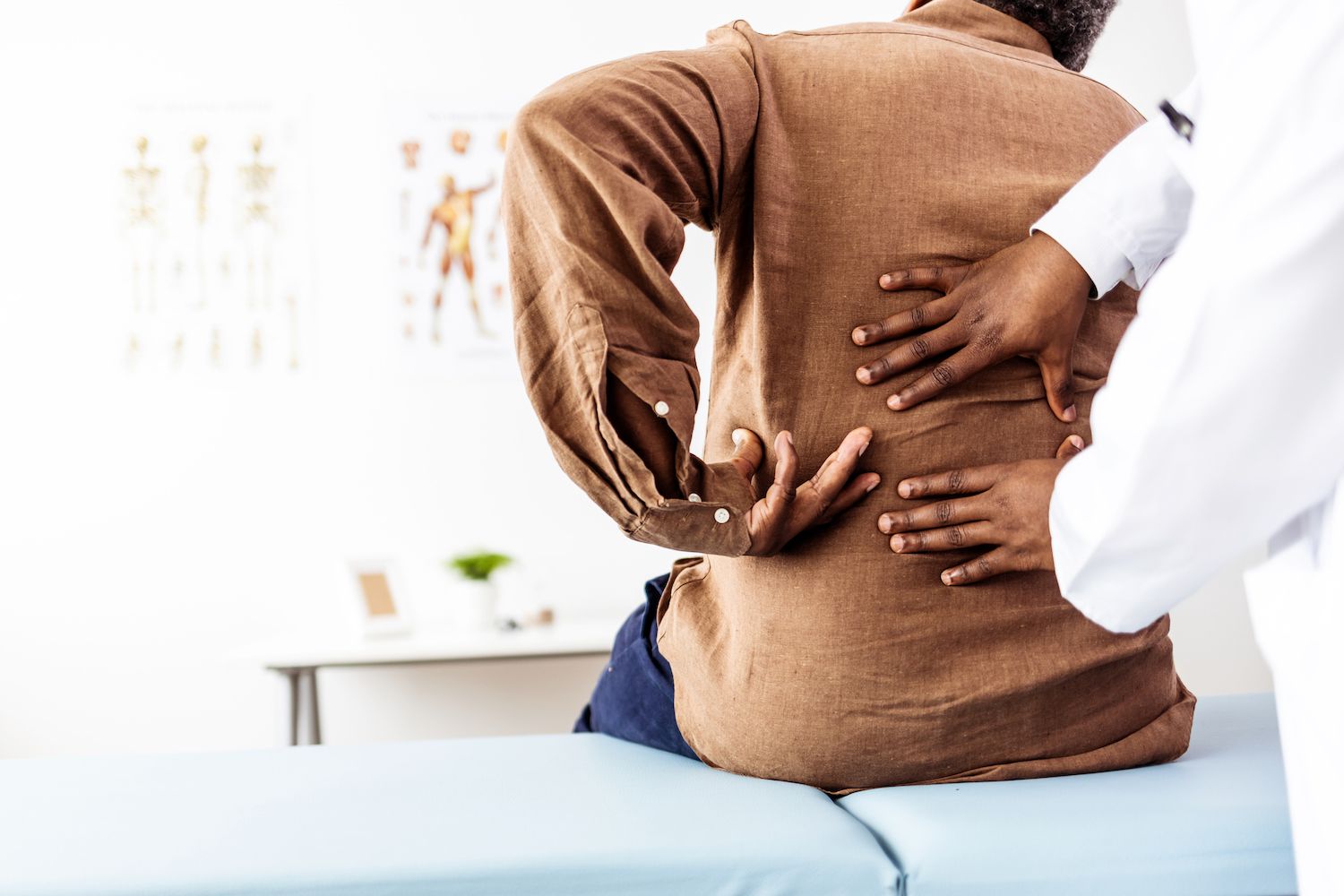What the Amount of Fat on Your Arms Might Tell You About Your Spine Health The study is the first to identify an association between body composition of the arms, bone quality, and spine strenth

New research shows that measuring arm fat may help predict spinal fracture risk in men and women over 50 years old
- Measuring arm fat may help predict spinal fracture risk in people over 50, research shows.
- The study is the first to identify an association between body composition of the arms and poor bone quality.
- In addition to arm fat, visceral fat—located in the abdomen that surrounds internal organs—was also associated with spinal strength.
For those over 50, measuring the total amount of fat in the arms may help predict which women and men are at a higher risk of a spinal fracture, new research shows.
The study, presented in May at the European Congress of Endocrinology in Stockholm, Sweden, is the first to identify that the body composition of the arms—particularly the amount of fat on them—is associated with poor bone quality and spinal strength.
According to senior study author Eva Kassi, MD, an endocrinologist and professor at the National and Kapodistrian University of Athens in Greece, the findings could better help identify high-risk individuals and further empower people to manage the amount of fat on their bodies.
“This could mean that the arm’s subcutaneous fat, which can be easily estimated even by the simple and inexpensive skin-fold calliper method, may emerge as a useful index of bone quality of the spine, possibly predicting the vertebrae fracture risk,” Kassi said in a news release.

ljubaphoto/Getty Images
The Link Between Arm Fat and Spine Strength, Explained
For the study, which has not yet been published in a peer-reviewed journal, researchers examined 115 people—14 men and 101 women—without osteoporosis and with an average age of 62 years old, to determine their body fat and the bone quality of their spines.
Spinal fractures—when a vertebra in the spine breaks—are the most common fractures associated with osteoporosis, a disease that causes a loss of bone mass and bone mineral density. Many people don’t know that they have osteoporosis, which weakens bones, until they are injured.
Participants’ bone mineral density (BMD) scores were measured through an imaging technique known as dual-energy X-ray absorptiometry (DEXA); they were also given a trabecular bone score (TBS) which assesses bone quality independently of BMD.
Researchers found that those with higher amounts of excess body fat—regardless of body mass index (BMI)—had lower bone quality in their spine. This was especially true for visceral fat (fat in the midsection surrounding the internal organs) and fat under the skin in the arms.
The link between arm fat and spinal strength shocked researchers. “Surprisingly, we identified, for the first time, that the body composition of the arms—in particular, the fat mass of the arms—is negatively associated with the bone quality and strength of the vertebrae,” Kassi said in the news release.
Eating More Eggs Might Help Protect Against Osteoporosis, Research ShowsUnderstanding Fat, Weight, and Bone Health
This isn’t the first time obesity and bone health have been studied. “The relation[ship] between obesity and spinal fracture has been studied before,” Kassi told Health.
Previously, medical professionals believed that that being overweight was actually protective for spine health, according to James S. Harrop, MD, professor of neurological and orthopedic surgery and division chief of spine and peripheral nerve surgery at Thomas Jefferson University in Philadelphia. The theory being that fat aided in load-bearing.
Newer research—including the newest study—contradicts that thinking, especially the impact of visceral fat on bone health.
“[Our study] found that increased visceral fat and higher android to gynoid ratio [having an apple-shaped body] were also correlated with a poor bone quality in [the] spine,” said Kassi.
Visceral fat, Kassi explained, is the hormonally more active component of the total body fat. It produces molecules called adipocytokines that provoke a low-grade inflammation, so the increased inflammatory status plausibly poses a negative impact on bone quality overall. Other evidence also indicates that molecules released in fat and muscle could effect osteoporosis development.
However, though losing weight may help with bone health, the act of losing weight alone may not be wholly protective of osteoporosis since other genetic factors are at play as well, Harrop told Health.
Looking Ahead and Keeping Bones Strong
Though the new study provides a good jumping-off point for future research, more and larger studies are needed to confirm the link between arm fat and spinal fracture risk, Kassi said—that includes using more participants, recruiting younger participants, and collecting data from more men.
In the meantime, there are ways to keep your bones strong no matter what your arms look like. Getting enough calcium and vitamin D in your diet are good places to start, said Harrop, along with getting enough weight-bearing exercise, like walking. Regular bone density tests and DEXA scans are also recommended for optimal bone health monitoring.
This story originally appeared on: Health News - Author:Kristen Fischer


















